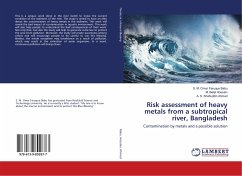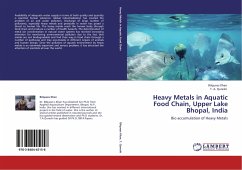
Geochemistry and risk assessment of heavy metals
Geochemistry and risk assessment of heavy metals in Red Sea sediments, Gulf of Aden, Yemen
Versandkostenfrei!
Versandfertig in 6-10 Tagen
27,99 €
inkl. MwSt.

PAYBACK Punkte
14 °P sammeln!
Since 2008, the capturing of commercial vessels and their crews by Somali pirates has become an ever increasing threat to international shipping. This threat has had a significant and detrimental effect on the ports surrounding the high risk areas, now encompassing the Gulf of Aden, the Arabian Sea, the Red Sea, the Gulf of Oman and the Indian Ocean. Around 30,000 ships transit the Gulf of Aden each year but around 10% of this ship traffic now opts to re-route around the Cape of Good Hope, rather than transit the Gulf of Aden and Suez Canal. As a result of the threat of piracy in the high risk...
Since 2008, the capturing of commercial vessels and their crews by Somali pirates has become an ever increasing threat to international shipping. This threat has had a significant and detrimental effect on the ports surrounding the high risk areas, now encompassing the Gulf of Aden, the Arabian Sea, the Red Sea, the Gulf of Oman and the Indian Ocean. Around 30,000 ships transit the Gulf of Aden each year but around 10% of this ship traffic now opts to re-route around the Cape of Good Hope, rather than transit the Gulf of Aden and Suez Canal. As a result of the threat of piracy in the high risk region, some countries (and in particular, Kenya, Yemen and the Seychelles) has seen a direct fall-off in trade, which has a corresponding effect on freight and port rates.












